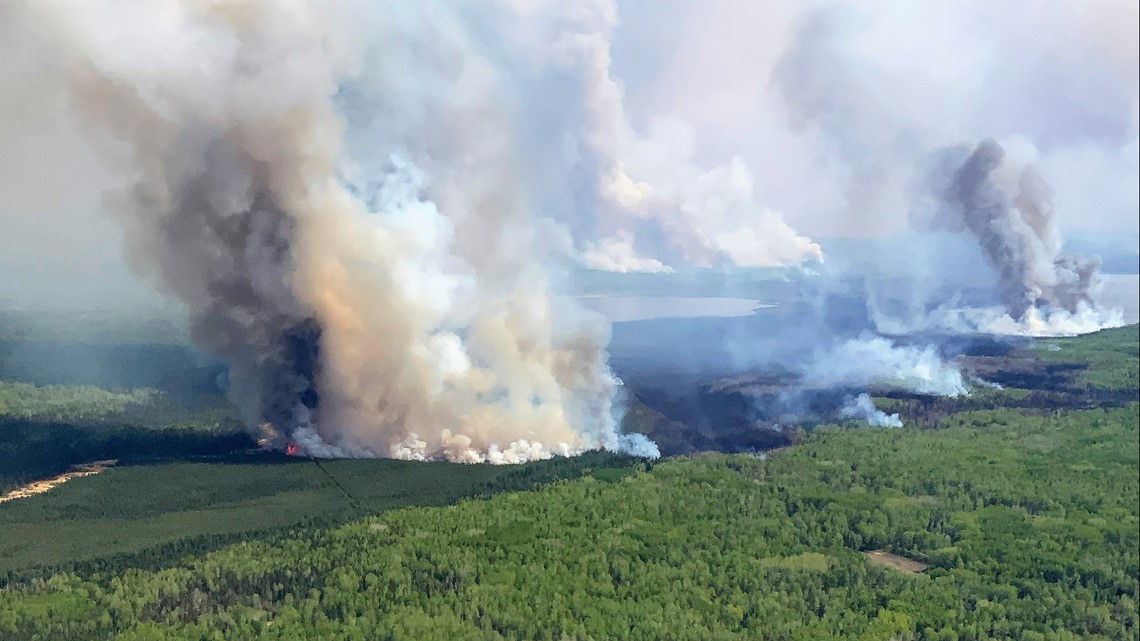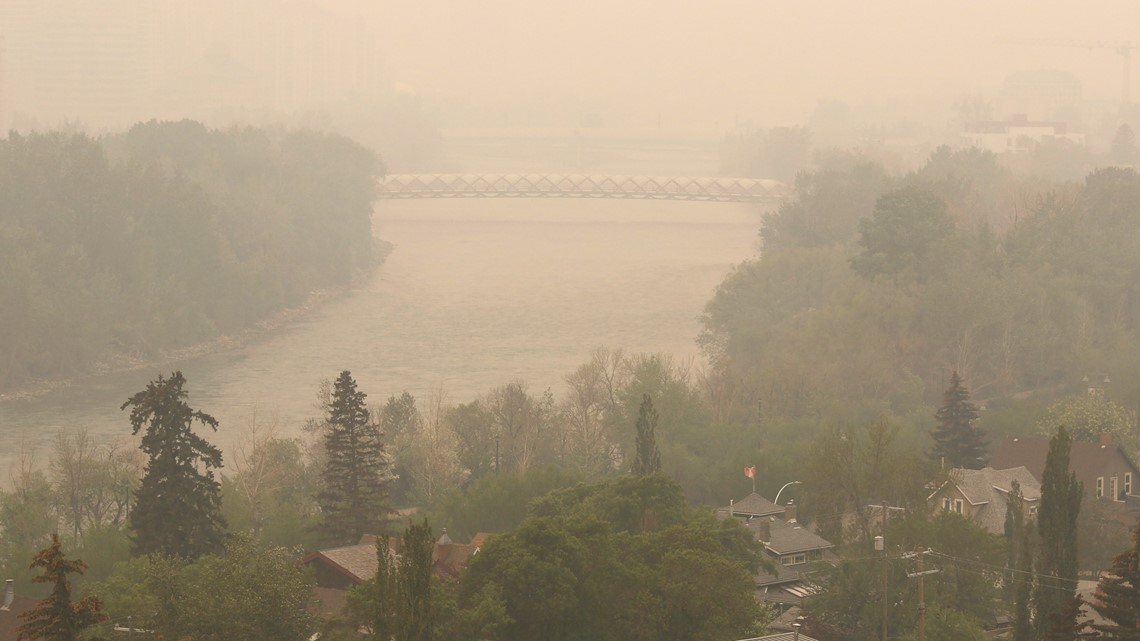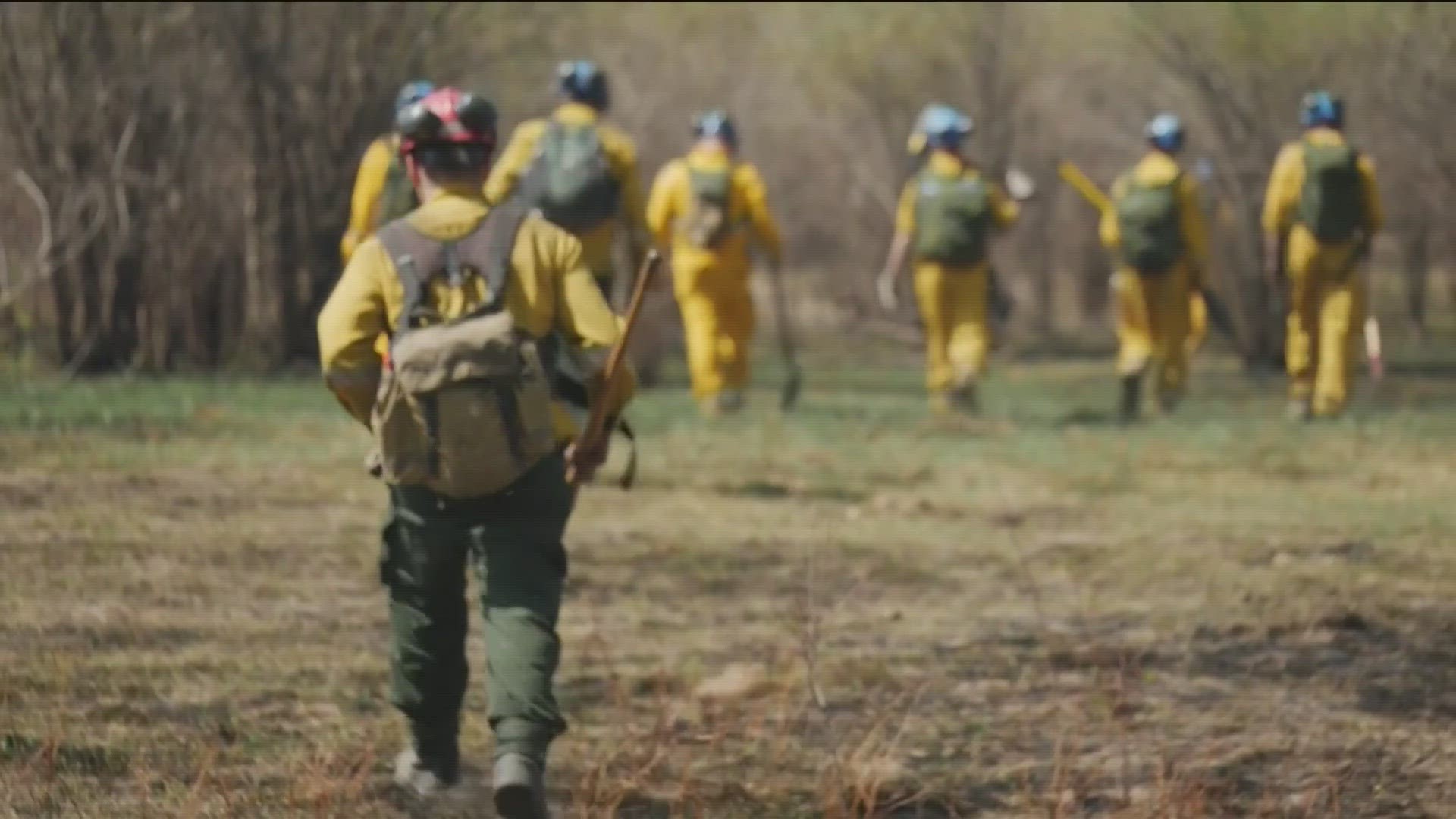BOISE, Idaho — The National Interagency Coordination Center based at the National Interagency Fire Center in Boise has sent additional resources to help fight wildfires in Canada, NIFC announced Friday.
Because of hot, dry conditions and extreme fire activity observed "on many incidents across all provinces and territories in Canada," NIFC said, the Canadian Interagency Forest Fire Centre has moved to Preparedness Level 5, the highest level on a five-level scale. That indicates the majority of Canada's firefighting resources are already committed to multiple regions across the country. The U.S., meanwhile, is at Preparedness Level 2.
The early-season wildfires in Canada are causing thousands of evacuations, damage throughout 1 million acres and a thick blanket of smoke traveling south into the United States, including Idaho, and reaching as far as Nebraska.


As of about 2 p.m. MDT on Friday, the CIFFC indicated 216 active fires were burning in Canada. Of those, 77 were out of control, 39 were being held, and 100 were under control. More than two-thirds of the fires are in the provinces of Alberta and British Columbia. Updates from CIFFC on wildfires in Canada are available here.
According to NASA, as of Wednesday, fires had already burned 10 times the average area for this time of year.


About 225 federal U.S. firefighting resources and support personnel are assigned to various fires in Canada. In addition to those resources, several state agencies are providing personnel and equipment. Idaho, Alaska, Oregon, Washington and Montana belong to the Northwest Wildland Fire Protection Agreement, aka Northwest Compact, with the western Canadian provinces of Alberta, British Columbia and Saskatchewan, as well as Yukon Territory and Northwest Territories/Forests.
Through that agreement, states have dispatched equipment and about 125 personnel. Of those resources, 26 incident management personnel are coming from Oregon; three incident management personnel are from Montana; an airtanker and the Pioneer Pike Hotshot Crew are from Alaska; Washington has sent miscellaneous firefighting personnel, an initial-attack hand crew and three engines. Washington and Oregon also have combined personnel to create a shared incident management team.
"With wildland fires straining the suppression efforts of our international partners in Canada, it is critical we use every authority and available resources to provide assistance." said George Geissler, Washington State Forester and the National Association of State Foresters Fire Committee Chair. "The interagency wildland fire community is committed to protect the communities and the natural resources we all rely upon."
The request announced Friday, processed through the NICC, included an additional 24 fireline specialists and supervisors, 61 crew members from three interagency hotshot crews, 29 members for two incident management teams, and equipment such as handheld radios, Mark III pumps with kits, and fold-a-tanks. Those personnel went through initial orientation Friday morning in Edmonton, Alberta.
In total, 625 federal, state and local firefighters and support personnel from the U.S. are now assigned to wildfires in Canada.
To fulfill an earlier request for Canada announced a week ago, on May 12, NIFC worked with several agencies to fill requests for two 15-person incident management teams, three interagency resources representatives, and 10 hand crews to help with wildfire suppression in the province of Alberta.

